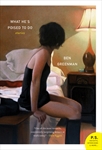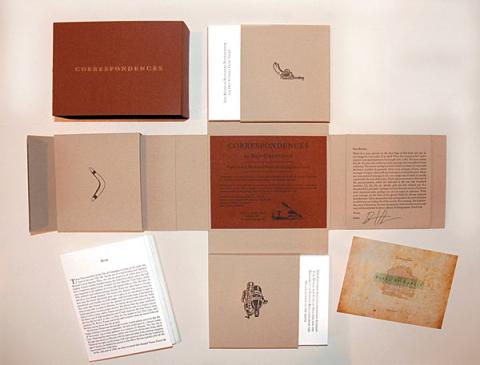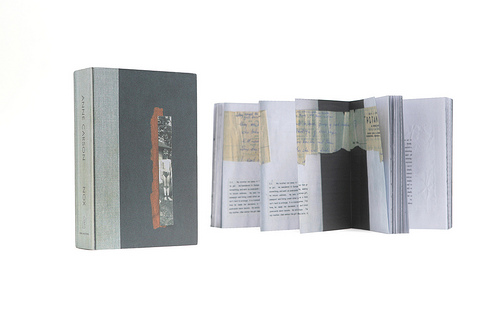Books, the idea, cont’d: Too beautiful to read?
Posted Under: The Designed Life
In general, the series Books: The Idea is currently migrating over to MKTG. But here’s one last entry on this site.
Ben Greenman’s book Correspondences, published last year, was described like so by its publisher:
Each hand-crafted, signed copy is composed of an unfolding chip-board casing built by letter-press maven Brandon Mise, which contains pockets for three accordion books bearing two stories each. The seventh story, which is written by Mr. Greenman with intentional gaps in the narrative, is printed on the casing and does something unprecedented: It invites the reader to contribute to the collection.The fourth pocket in the casing contains a postcard that the reader can use to fill in the gaps in Greenman’s narrative and send to Hotel St. George Press for possible publication in future online and paperback editions of the book.
Now that’s a book in the form of a beautiful object! Not surprisingly, it cost $50. Time Out Chicago said: “As an object, Correspondences is a genius invention. But as a book, it works just as well.”
Note the two distinct categories: “as an object” and “as a book.”
 The book is about to be published again, under the title What He’s Poised To Do, and in the form of, well, of a traditional collection-of-words object. (On a not-unrelated note, Mr. Greenman, a three-time contributor to Significant Objects, has guest-curated a week of objects and epistolary stories for us over on that site, starting today.)
The book is about to be published again, under the title What He’s Poised To Do, and in the form of, well, of a traditional collection-of-words object. (On a not-unrelated note, Mr. Greenman, a three-time contributor to Significant Objects, has guest-curated a week of objects and epistolary stories for us over on that site, starting today.)
It seems that one reaction to the original version was that at it was such a great object that it was, in effect, too nice to monkey with — that is to say, it was too beautiful to read. Perhaps the new, more trad-book version will actually be more widely read. And is this not the idea of the book? To be read? Maybe, maybe not.
Personally, I’d opt for the fabulous-object version, if I had a choice.
Meanwhile, as long as we’re on the subject of the super-objectified book, Gabriel Levinson recently hipped me to this:
I’ll quote from Dossier Journal:
Anne Carson’s new book Nox, about her brother who died in 2000, is more like an object when you first look at it — it is done in an accordion-style printing that unravels out of a box. …
Not only is this a beautiful book, but the form follows the function in that Nox feels precious, both as an object in your hand and in its subject matter. It also un-packs itself slowly and with a bit of mystery as we unravel fragments of her late brother’s life….
I think what is great about this book is that the end result feels like sifting through actual pieces of a life and the tangibility adds to that. As the electronic book debate rages on, Carson has given us something to literally pore over and read through and lose ourselves in that stretches out across the length of our entire living room.
I wonder if e-ification of the book business will result in fewer objecty books like this — or more?




 "
"















 Kim Fellner's book
Kim Fellner's book  A
A